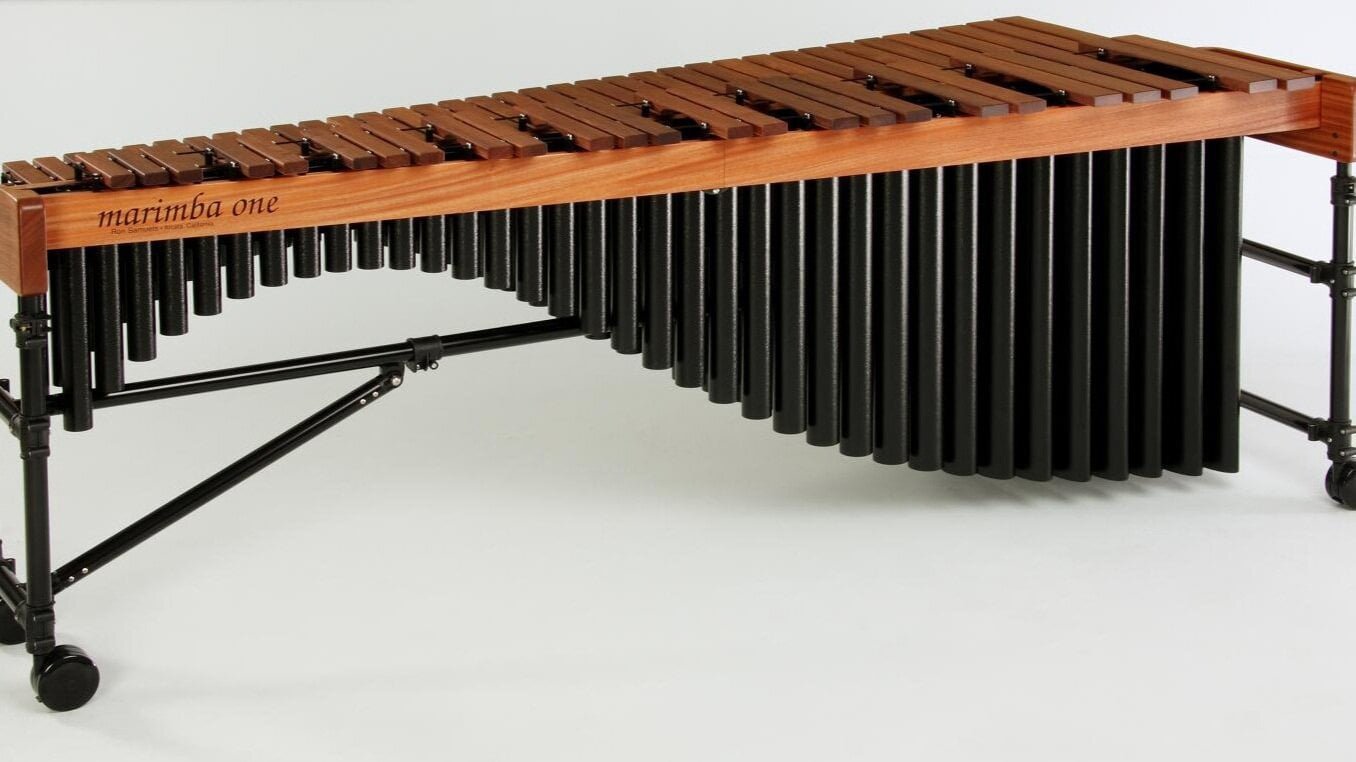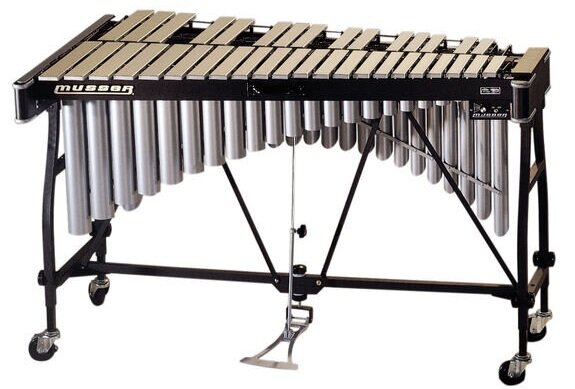Physical Address
304 North Cardinal St.
Dorchester Center, MA 02124
Physical Address
304 North Cardinal St.
Dorchester Center, MA 02124


The xylophone has wooden bars and a bright, crisp sound; the vibraphone has metal bars and motor-driven resonators producing a vibrato effect, and the marimba has wooden bars with a richer, softer sound and can cover a larger range. The size of these instruments also differs, with the marimba being the largest, vibraphone in the middle, and xylophone typically the smallest.
Percussion enthusiasts often delight in the distinct characteristics of the xylophone, vibraphone, and marimba. These keyboard percussion instruments each bring a unique timbre and playing technique to the table, captivating audiences with their individual charm. Originating from different cultural backgrounds, their construction reflects their traditional usage and contemporary adaptations.
Musicians use mallets to strike the bars of these instruments, eliciting resonances that define their sonic signature. Educators and composers exploit these differences to enrich musical pieces across various genres, from classical to jazz, ensuring these instruments’ enduring popularity and relevance in the music world.
The enchanting world of mallet percussion instruments boasts a rich array of sounds and histories. Instruments like the xylophone, vibraphone, and marimba share many similarities, yet they each offer unique tones that color music in different ways. Whether it’s in a lively orchestra or a solo performance, these instruments have a special charm that captivates audiences around the globe.
Mallet percussion has roots deep in history. These instruments have journeyed from ancient civilizations to modern concert halls. Early versions of the xylophone were found in Africa and Asia. The marimba originated in Africa and traveled to Latin America. By the 20th century, the vibraphone emerged, adding a new layer to the world of jazz.
In a music ensemble, each mallet instrument has a distinct role. The bright, punchy notes of a xylophone cut through ensembles, often used for melody or accents. The marimba offers a warm, resonant tone ideal for blending or carrying harmonies. The vibraphone, with its motorized resonators, provides a smooth sustain and often adds texture to jazz and contemporary music.
Let’s dive into the world of percussion instruments, starting with the xylophone. Among the shimmering sounds and rhythmic beats, the xylophone stands out for its unique qualities.
The xylophone consists of wooden bars laid across a frame. These bars, often made from hardwood like rosewood or synthetic materials, are tuned to specific musical notes. Under the bars, there are resonator tubes, which amplify the sound when struck with mallets. The length and thickness of each bar affect the pitch: longer bars produce lower notes, and shorter bars yield higher tones.
The xylophone’s sound is crisp and staccato, making it perfect for fast-paced melodies. It does not have the capability to sustain notes like a vibraphone or marimba. Its clear, bright tone cuts through ensembles effortlessly. This makes it ideal for spirited music.
| Context | Features |
|---|---|
| Orchestral music | Accentuates quick, agile melodies |
| Solo performances | Highlights rhythmic capabilities and tonal clarity |
| Educational settings | Used for teaching basic melody and rhythm |
In various musical settings, the xylophone provides a touch of brilliance. From orchestras to classrooms, it remains a beloved and versatile instrument.
Welcome to the world of tuned percussion, where three distinct instruments make their mark with unique sounds and features. In the spotlight today is the vibraphone, an instrument that holds a special place in the hearts of jazz enthusiasts and contemporary musicians alike. Let’s dive into the design and mechanisms that set the vibraphone apart, and explore its influential role in music.
The vibraphone, often called just a ‘vibes’, stands out with its metallic bars and resonating tubes. To create its distinctive sound, players strike the bars with mallets. Below each bar, metal tubes extend downward, amplifying the sound. What really brings the vibraphone to life is its motorized feature:
These design features give the vibraphone its signature sound, a blend of mellow warmth and bright resonance.
The vibraphone found its voice in jazz during the 20th century. Its ability to glide between notes and add percussive accents suited the genre’s expressive needs. Jazz greats like Lionel Hampton and Milt Jackson showcased the vibes’ potential. In contemporary music, the instrument shines across genres from pop to electronic, offering a rich palette for innovation:
| Jazz Pioneers | Contemporary Genres |
|---|---|
| Lionel Hampton | Pop Music |
| Milt Jackson | Electronic |
| Gary Burton | World Music |
The vibraphone continues to enrich musical landscapes with its versatility. Through its enchanting sound and adaptability, it earns its stripes as a beloved instrument in jazz and beyond.

Credit: m.youtube.com
An intriguing member of the percussion family, the marimba stands out with its rich history and distinctive sound. Unlike its cousins, the xylophone and vibraphone, the marimba boasts resonating tones that have captivated listeners worldwide, from classical enthusiasts to contemporary audiences. Let’s dive into understanding the marimba and explore its unique characteristics.
The marimba features large wooden bars laid across a frame, much like a xylophone. Each bar represents a different musical note. Underneath these bars are tubes called resonators. These tubes help amplify the sound. Here’s a closer look:
The sound range of the marimba is similar to the human voice. This range allows for melodies that are both warm and expressive. With soft mallets, the marimba sings with a rich, mellow tone, while harder mallets bring out a brighter, more percussive sound.
Marimbas hold deep roots in African and Latin American music. In countries like Guatemala and Mexico, the instrument is a national symbol. Its repertoire is vast. Here’s a snapshot:
| Genre | Significance |
|---|---|
| Folk | Used in traditional music |
| Classical | Featured in orchestras and solo pieces |
| Jazz | Explores improvisation |
| Contemporary | Pushes musical boundaries |
Notable composers have written works that highlight the marimba’s versatility. Performers often engage in intricate solo performances and ensembles. The instrument has secured its place both in concert halls and in the hearts of tradition.
Understanding the subtle differences in playing techniques is key to mastering the xylophone, vibraphone, and marimba. Each instrument demands unique methods to bring out its distinct sound. Let’s delve into the specific playing techniques for these popular percussion instruments.
Mallets are the musicians’ wand for these instruments. They can transform sound based on their material and weight.
Each instrument has a style shaped by its culture and music genre.
| Instrument | Performance Style |
|---|---|
| Xylophone | Often played quickly, with precision in orchestras and bands. |
| Vibraphone | Used in jazz with a more fluid, sustained style due to its motorized resonators. |
| Marimba | Played melodically in classical and contemporary music, offers rich tones. |
The vibrant worlds of mallet percussion instruments like the xylophone, vibraphone, and marimba captivate with unique sounds and settings. Each instrument brings a distinct flavor to the music stage, showcasing different shades of pitch and resonance. Understanding the nuanced differences in timbre and tuning, alongside their traditional ensemble roles, reveals the character and charm of these melodic percussion stars.
The xylophone, vibraphone, and marimba differ in materials and design. This affects their timbre, the color of sound they produce. Here’s how they contrast:
Each instrument’s tuning range also varies. The marimba has the widest range, followed by the vibraphone, with the xylophone having the smallest range. Proper tuning is crucial, ensuring harmony during performances.
Mallet instruments find their home in diverse musical environments. They shine in their respective settings:
| Instrument | Common Settings | Ensemble Roles |
|---|---|---|
| Xylophone | Orchestras, Military bands | Adds punchy accents and rhythmic support |
| Vibraphone | Jazz ensembles, Solo performance | Provides harmonic and melodic textures |
| Marimba | Classical chamber music, Contemporary solo | Delivers melodic leads and rich harmonies |
The vibraphone often stars in jazz with its expressive vibrato, while xylophones add clarity to orchestra hits. Marimbas bring warmth to classical pieces, letting musicians express a range of emotions. Their unique roles in ensembles highlight their sonic identities, making each performance unforgettable.
Selecting between a xylophone, vibraphone, and marimba relies on distinct factors. Each instrument has a unique sound and playing technique. Below, we explore the considerations musicians should make and envision how these mallet instruments may evolve.
Sound Preferences: Xylophones emit bright, crisp sounds. Vibraphones produce a softer, mellow tone with sustain. Marimbas offer rich, warm notes.
Music Genre: Xylophones fit well in orchestras and marching bands. Vibraphones are common in jazz. Marimbas work across various styles.
Portability: Consider the weight and size if you need to transport the instrument.
Range: Marimbas have the widest range, followed by vibraphones and xylophones.
Investment: These instruments vary in price. Assess your budget closely.
Innovation continues in the design of mallet instruments. We may see advancements in materials and sound amplification. The digital integration can also redefine how these instruments are played. Artists and composers will further push the boundaries of what’s possible. This ensures a thriving future for xylophones, vibraphones, and marimbas.

Credit: ryanjonker.com

Credit: m.youtube.com
What Distinguishes A Xylophone From A Marimba?
The xylophone and marimba differ primarily in size and sound. Xylophones have a higher pitch with sharper tones, while marimbas have larger, resonant wooden keys producing deeper, warmer notes. The materials and bar width also vary, enhancing these tonal differences.
Are Vibraphones And Xylophones Constructed Similarly?
Vibraphones and xylophones share a layout but differ in construction. Vibraphones have metal bars and motor-driven resonators creating a sustained, vibrato sound. Xylophones feature wooden bars and a brighter tone without vibrato, owing to their fixed resonators.
Can You Play A Marimba With Xylophone Mallets?
Yes, you can play a marimba with xylophone mallets, but it’s not ideal. Marimba mallets are typically softer, enhancing the instrument’s rich, mellow sound. Xylophone mallets are harder, designed for a brighter, more piercing sound, which may not bring out the marimba’s full tonal range.
How Does A Vibraphone Produce Vibrato?
A vibraphone produces vibrato through its spinning resonators. Each resonator tube features a motor-driven butterfly valve that rapidly opens and closes, creating a pulsing effect as the air escapes, which results in the characteristic vibrato sound.
Exploring the realm of percussion leads to fascinating discoveries, like the nuances distinguishing xylophones, vibraphones, and marimbas. Each instrument’s unique sound and construction cater to diverse musical genres and player preferences. Embrace their differences, and let your appreciation for percussive melodies grow.
As musicians and listeners alike delve into these instruments’ characteristic tones, the richness of percussion truly shines through.